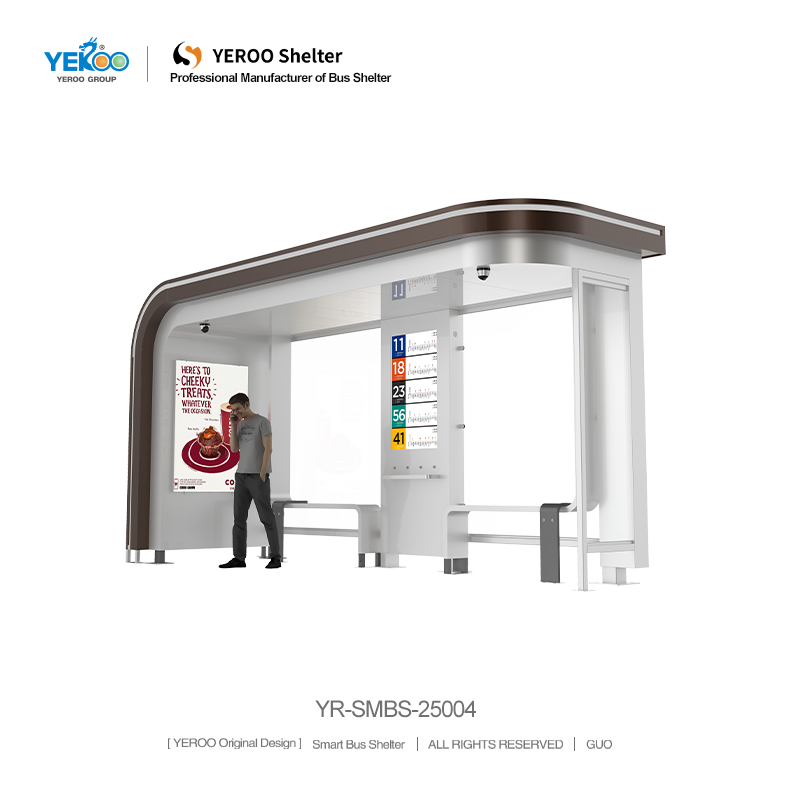Why Is a Bus Shelter with Bench a Basic Yet Vital Passenger Facility
Enhancing Passenger Comfort with a Bus Shelter with Bench
Public transit systems achieve optimal usability when shelters prioritize rider comfort through purposeful design. A bus shelter with bench serves as more than just infrastructure—it directly impacts user experience and system effectiveness.
Protection from Inclement Weather While Waiting for Transit
Sturdy roof structures in modern shelters reduce heat stress by 43% and cold exposure by 31% compared to open-air stops, according to a 2023 urban climate study. Side panels and windbreaks further mitigate weather impacts, creating safer waiting zones during storms or extreme temperatures.
Reduced Physical Strain Through Accessible Seating During Wait Times
60% of riders over 65 report difficulty standing for extended periods, per CDC mobility data. Benches with ergonomic backrests and ADA-compliant height (17–19 inches) allow passengers to conserve energy, particularly benefitting pregnant travelers and those with chronic pain conditions.
Improved Rider Satisfaction and Perception of Public Transit Quality
Cities with sheltered, seated stops report 22% higher satisfaction scores in transit surveys than those without. This psychological boost stems from perceived care by transit authorities, fostering long-term ridership loyalty. Research by leading urban planners confirms amenities like benches increase the likelihood of choosing buses over ride-shares by 19%.
Case Study: Increased Ridership After Installing Bus Shelters with Benches in Portland, OR
In 2022, Portland launched a pilot program placing around 120 new shelters with seating along busy streets, and within just eight months saw weekday ridership go up by about 18%. Even more interesting was what happened at night and on weekends when usage actually jumped 27%. This suggests that people working odd hours or those who rely on public transit due to mobility issues were finally getting what they needed. According to city reports, these shelters helped cut down on car trips by roughly 4,200 each day. That translates into something like 640 tons less carbon dioxide being pumped into the atmosphere every year, which is pretty impressive when you think about it. Improving Safety and Security at Transit Stops
Improving Safety and Security at Transit Stops
Passenger Safety During Nighttime Hours Through Sheltered Waiting Areas
Bus shelters that include seating areas make people feel safer when waiting late at night because they create bright spots where criminals are less likely to hang around. Cities that upgraded their stop designs saw about a 40 drop in crime reports during evening hours according to research from Urban Safety Institute back in 2023. The best shelters have those tough glass panels on the sides so riders can spot their bus coming but still be visible to others walking by. This kind of setup works wonders for safety without needing any extra security personnel or equipment.
Reduced Exposure to Traffic and Environmental Hazards
Strategic placement of shelters minimizes rider exposure to roadway dangers, with curb extensions and barrier-protected benches decreasing pedestrian-vehicle conflicts by 34% (National Transit Safety Board 2022). Elevated flooring and wind-deflecting panels shield waiting passengers from road spray during storms and reduce inhalation of vehicle exhaust by 28% compared to open-air stops.
Balancing Lighting for Security and Privacy Concerns in Shelter Design
Public transportation groups across the country are starting to install these ambient LED lights that follow IES recommendations but also tackle the problem of light pollution which has become a big headache for people living near transit stops. Take Seattle for instance – their test run last year showed that when they used those frosted lights pointing downwards, residents complained about glare way less often, around two thirds fewer complaints actually. Plus, the cameras still worked just fine for safety purposes. What makes this interesting is how it fits right into the latest accessibility rules too. These regulations basically say we need between 25 and 50 lux of light at places where people sit down, but not so much that it creates dark spots where folks might trip or feel unsafe. Makes sense really, balancing visibility with comfort.
FAQ Section
What are the benefits of bus shelters with benches?
Bus shelters with benches provide protection from weather, reduce physical strain, improve rider satisfaction, enhance safety, increase accessibility, encourage public transport use, and promote equity.
How do bus shelters with benches impact ridership?
Bus shelters with benches can increase ridership by providing comfortable, safe, and accessible waiting areas. Studies show an increase in ridership and a reduction in car trips with the installation of shelters with benches.
What design considerations are important for a bus shelter with bench?
Important design considerations include ADA compliance, ergonomic seating, protection from weather, lighting for security, and strategic placement to reduce traffic hazards.


